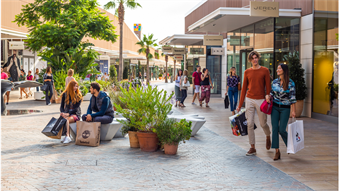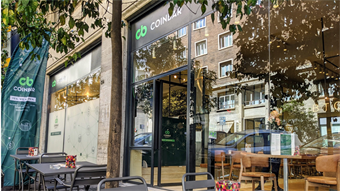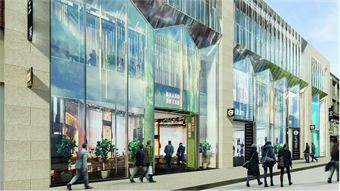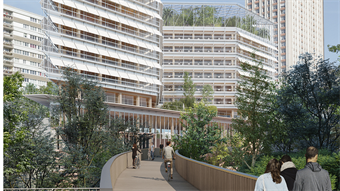VIA Outlet's success proves the value in the destination
- In Interviews
- 11:36, 18 November 2020
- 110868 Views
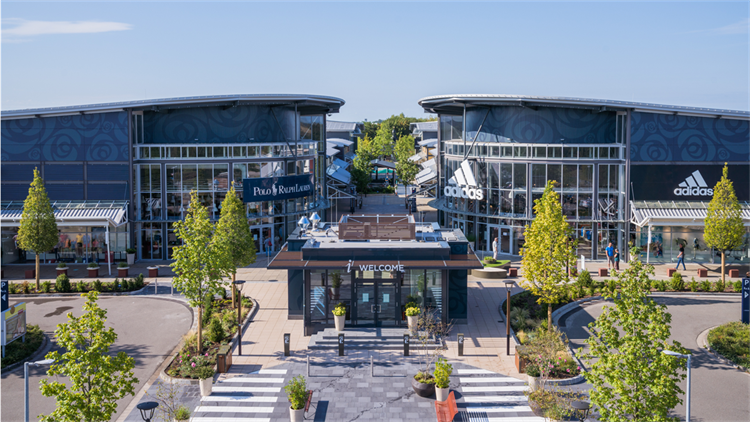
Created in 2014 to acquire and add value to existing outlet centres, VIA Outlets currently owns 11 assets across nine European countries, and is the third largest premium outlet operator in Europe.
Interviewed in September, CEO Otto Ambagtsheer reveals VIA Outlet’s strategy for resilience, in the year that Dutch pension fund manager APG became virtually sole owner of the firm.
RW: How has 2020 shaped up so far?
Otto Ambagtsheer (OA): We started the year very strongly, with excellent growth figures similar to 2019, when we registered a sales growth of 8.4%. Then Covid hit us. In the first instance, we saw a drop in non-EU tourists in early March, and we had to close our outlets in Poland and the Czech Republic.
By mid- to late-March we had closed 8 out of our 11 centres; while Hede Fashion Outlet in Gothenburg, Oslo Fashion Outlet and Batavia Stad Amsterdam Fashion Outlet never closed, there was no footfall in the latter, and less than 10 brands trading. Over the summer, we started reopening; the last was Freeport Lisboa Fashion Outlet, on June 15.
The rebound has actually been very strong, and we’re targeting getting back to 2019 levels. In Oslo, we’re actually trading better than last year; Zurich is also outperforming, while Iberia is challenging for a number of reasons. There’s still a cap on footfall in some centres, which isn’t helping, but overall, we’re very pleased with our performance. Backing our strong recovery are our guarantees for safe shopping, with our hygiene and safety protocols certified by Bureau Veritas.
RW: Which outlet sector fundamentals have been borne out by the crisis?
OA: Outlets perform well in times of economic uncertainty. Consumers are more price sensitive, but still attracted by premium brands. Also, because most outlet centres are outdoor and well designed, we can facilitate a safer shopping experience, which is still a pleasant experience.
Because of the strong partnerships we have with brands, they were all able to reopen when we relaunched, contributing to our strong recovery. The business model is all about turnover rent, so there is much more alignment between brands and centre operators in this industry.
RW. How are customers responding now?
OA: We’re not on at the same levels of footfall as in 2019, due in part to some footfall caps, but average visitor spend is higher. Our guests are eager to shop as they have missed the shopping experience, and they want to make that effort to visit the outlet centre.
Our food and beverage operators were amongst the first to close, but have mostly managed to reopen, with some specialising in takeaway, or a mix of eat in and eat out.
F&B is very much a part of our strategy, so we continue to work on that. The segment is rebounding strongly in any case, and we are very glad we could reopen most of our restaurants and cafes. We still have operational constraints, including 1.5 metre distancing protocols, but takeout in particular has helped us resume nice turnover volumes.
RW: In terms of the portfolio, is there any news about deals, refurbishments or disposals?
OA: The events of this year haven’t interfered with our plans to remodel some of our assets. We did have to reduce a lot of capex to manage our cash flow, but were able to convince investors that stopping wasn’t an option. So work continued in Zweibrücken Fashion Outlet, Vila Do Conde Porto Fashion Outlet and Oslo Fashion Outlet.
The Zweibrücken refurbishment is now complete, featuring redesigned squares, added landscaping, and a total centre upgrade -
it looks fantastic. New brands came in too, from Coccinelle to Starbucks, to bring the centre to fully let. Porto is almost also finished, with its transformed F&B offer, while the Oslo remodelling has translated immediately into improved performance, far above 2019 sales figures and footfall.
We’ve earmarked Seville Fashion Outlet for a possible extension – similar to the transformation of our Gothenburg asset – and this too will be a big upgrade, on which we’d like to commence in early 2021.
What has been fantastic to see – particularly in the light of the changes we’ve seen at investor level – is that our outlets are still following a growth path. Our three Rs strategy - which focuses on remodelling, remerchandising and remarketing, is the driving force behind our success, and APG fully supports that. There is always something you can remodel, and there are always way to improve the brand mix.
RW: Will VIA Outlets and its tenants benefit from the unsold stock created by Covid lockdowns this spring?
OA: When we started talking to brands about dealing with the Covid crisis, the really interesting factor was that discussions were not just about rent deferrals and/or abatements, but also about expanding or creating pop-up stores to sell unsold stock, and partnering to solve issues together - another sign of our strong relationship with brands.
Outlets have been the second-fastest growing retail channel after online, so it’s an ever-increasing part of brands’ omnichannel strategy. Like online, we offer customers competitive prices – but outlet centres also represent a great day out; it’s a leisure activity featuring a premium brand mix, and an unbeatable, overall experience. This crisis has proved again that outlet centres are very resilient and offer something unique.
RW: What’s your attitude to online and digital tools?
OA: It’s early days, but we’re investigating what our online presence should look like, especially after the lessons of this year. Hybrid models are also interesting, including click and collect. In that spirit, we are also looking at bring online players into our outlets, as part of our policy of attracting new brands in general.
We want to obtain more data about our guests, and have just extended our relationship with Coniq, which runs our loyalty programme.
The data race is key to connecting with the entire customer journey, from the first-time potential guests visit our websites, to getting them into our centres.


